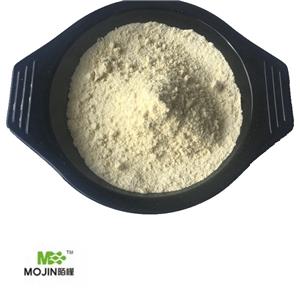
Disulfiram NEW
| Price | Get Latest Price |
| Package | 25KG |
| Min. Order: | 1KG |
| Supply Ability: | 50000KG/month |
| Update Time: | 2023-08-15 |
Product Details
| Product Name: Disulfiram | CAS No.: 97-77-8 |
| EC-No.: 202-607-8 | Min. Order: 1KG |
| Purity: 99% | Supply Ability: 50000KG/month |
| Release date: 2023/08/15 |
| CAS: | 97-77-8 |
| MF: | C10H20N2S4 |
| MW: | 296.54 |
| EINECS: | 202-607-8 |
| Product Categories: | Antabuse, Antabus;Other APIs;Miscellaneous Emzyme;Aliphatics;Amines;Sulfur & Selenium Compounds |
| Mol File: | 97-77-8.mol |
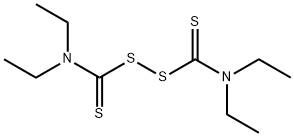 | |
| Disulfiram Chemical Properties |
| Melting point | 69-71 °C (lit.) |
| Boiling point | 117°C |
| density | 1.27 |
| vapor pressure | 0Pa at 25℃ |
| refractive index | 1.5500 (estimate) |
| Fp | 117°C/17mm |
| storage temp. | 2-8°C |
| solubility | 0.004g/l |
| form | Crystals, Crystalline Powder or Granules |
| pka | 0.86±0.50(Predicted) |
| color | Light yellow |
| Odor | lt. gray powd., sl. odor |
| Water Solubility | 0.02 g/100 mL |
| Merck | 14,3364 |
| BRN | 1712560 |
| Exposure limits | ACGIH: TWA 2 mg/m3 NIOSH: TWA 2 mg/m3 |
| Stability: | Stable. Incompatible with strong oxidants. |
| InChIKey | AUZONCFQVSMFAP-UHFFFAOYSA-N |
| LogP | 3.6 at 21℃ |
| CAS DataBase Reference | 97-77-8(CAS DataBase Reference) |
| IARC | 3 (Vol. 12, Sup 7) 1987 |
| NIST Chemistry Reference | Disulfiram(97-77-8) |
| EPA Substance Registry System | Disulfiram (97-77-8) |
| Disulfiram Usage And Synthesis |
| General Introduction | Alcohol dependence is a chronic disorder that may have multiple relapses and remissions, increased mortality and low long-term abstinence rates that lead to increased psychosocial losses. Many drugs have been used in the treatment of this disorder such as the anti-craving agents, acamprosate, naltrexone and the aversive agent, disulfiram[1, 2]. Disulfiram (trade name: Antabuse) has been in use since the early 1940s for the treatment of alcohol dependence and is the first FDA-approved medication for the treatment of this disorder[3,4,5]. Disulfiram has thus completed almost 60 years of use in alcohol use disorders and has stood the test of time[6]. A large number of studies have been done on this molecule, ever since some proving its superiority over other drugs while others negating it.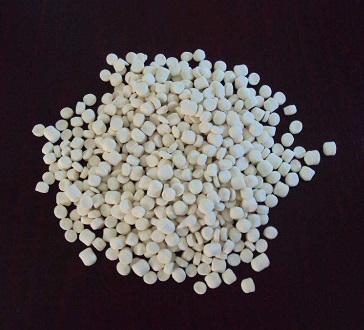 |
| Uses | Disulfiram , is a sulfur- and nitrogen-containing compound with several industrial uses, including applications as a rubber accelerator and vulcanizer, fungicide, and seed disinfectant. It is most commonly known as antabuse, a therapeutic agent for the treatment of alcohol abuse that causes nausea, vomiting, and other adverse effects when ethanol is ingested. Disulfiram is an inhibitor of aldehyde dehydrogenase so that it allows for buildup of the acetaldehyde metabolite of ethanol, causing unpleasant effects that are a deterrent to the ingestion of alcohol. Because of the buildup of acetaldehyde, disulfiram should be given with extreme caution, especially to individuals suffering from liver cirrhosis. |
| Indications | Disulfiram is used as a second line treatment of alcohol dependence, behind acamprosate and naltrexone[8]. It is an aid for the management of selected chronic alcohol patients who want to remain in a state of enforced sobriety so that supportive and psychotherapeutic treatment may be applied to best advantage. However, it should be noted that disulfiram is not a cure for alcoholism. When used alone, without proper motivation and supportive therapy, it is unlikely that it will have any substantive effect on the drinking pattern of the chronic alcoholic dependence[5]. Disulfiram should not be taken if alcohol has been consumed in the last 12 hours[9]. Recently, more and more studies have shown that disulfiram has the potential for the treatment of cancer[12, 13] and HIV infections[10, 11]. Disulfiram (DSF) can reactivate latent HIV-1 expression in a primary cell model of virus latency and has the potential to deplete the latent HIV-1 reservoir in patients on combination antiretroviral therapy. DSF can reactivate latent HIV-1 expression via the Akt signaling pathway through depletion of PTEN[10]. Recent studies have disclosed a surprising, but mechanistically consistent, anticancer activity of disulfiram. Disulfiram has been successfully used to suppress hepatic metastases originating from ocular melanoma[12]. The anticancer mechanism of disulfiram is through inhibiting the 26S proteasome (The orderly degradation of cellular proteins is critical for normal cell cycling and function, and inhibition of the proteasome pathway results in cell-cycle arrest and apoptosis)[12-14]. Moreover, disulfiram was also found to have specific activity against zinc fingers and RING-finger ubiquitin E3 ligases that play an important role in cancer development[12, 13]. |
| Mode of action | Ethanol undergoes metabolism in the liver initially by alcohol dehydrogenase (ADH) forming acetaldehyde; this is removed from the body primarily by oxidation into acetate by acetaldehyde dehydrogenase (ALDH)[15], which finally enters the citric acid cycle. Disulfiram acts by inhibiting the enzyme ALDH via its metabolite S-methyl N, N-diethyl-dithio-carbamate-sulphoxide[16], leading to accumulation of acetaldehyde in blood. This gives rise to various manifestations of disulfiram-alcohol reaction (DER)[17]. Since the inhibition of ALDH by disulfiram is irreversible, the DER will get terminated only after production of new ALDH oncedisulfiram is stopped. The new ALDH takes about a week’s time to be produced. Hence patients should be advised to take alcohol only after 2 weeks of stopping disulfiram[18]. In addition to this, disulfiram also acts on the dopaminergic system, both disulfiram and its metabolite carbon disulfide leading to inhibition of dopamine beta-hydroxylase (DBH) that leads to increase in the levels of dopamine. This may give rise to several neuropsychiatric manifestations such as delirium, paranoia, impairment of memory, ataxia, dysarthria and frontal lobe release signs[19]. Besides this action, disulfiram is also known to inhibit dopamine beta-hydroxylase leading to an increase in dopamine concentrations but decreased norepinephrine in the brain[20]. This may suggest an anti-craving role of disulfiram in alcohol dependence[21]. |
| Adverse reactions | In severe cases, hepatitis such as both cholestatic and fulminant hepatitis, as well as hepatic failure resulting in transplantation or death, could occur upon treatment of disulfiram[5]. In a small number of patients, side effects include a transient mild drowsiness, fatigability, impotence, headache, acneform eruptions, allergic dermatitis, or a metallic or garlic-like aftertaste during the first two weeks of therapy. These reactions often disappear spontaneously with the continuation of therapy, or with reduced dosage. High dosage, combined toxicity (with metronidazole or isoniazid), or to the unmasking of underlying psychoses can cause psychotic reactions[5]. |
| Warning and precaution | The following tips should be pay attention during administration of disulfiram[9]. Disulfiram is not allowed if the patients have consumed alcohol within the past 12 hours. Do not drink alcohol while taking disulfiram and for up to 14 days after stop taking disulfiram. It is not known whether disulfiram will harm an unborn baby. Tell your doctor if you are pregnant or plan to become pregnant while using this medicine. It is not known whether disulfiram passes into breast milk or if it could harm a nursing baby. You should not breast-feed while using this medicine. People less than 18 years old should also disabled. Disulfiram should not be used in the following cases: Allergic people; those who have recently taken metronidazole (Flagyl) or paraldehyde; or have consumed any foods or products that contain alcohol; People of the following cases should consult the doctors: Liver or kidney disease; heart disease, high blood pressure, history of heart attack or stroke; Underactive thyroid; diabetes; seizures or epilepsy; head injury or brain damage; a history of mental illness or psychosis; an allergy to rubber; or taking phenytoin (Dilantin), tuberculosis medicine, or a blood thinner (warfarin, Coumadin, Jantoven). |
| Mechanism of action | Disulfiram is an oral drug used for treating alcoholism. Alcohol is converted in the body into acetaldehyde by an enzyme called alcohol dehydrogenase. Another enzyme called acetaldehyde dehydrogenase then converts acetaldehyde into acetic acid. Disulfiram prevents acetaldehyde dehydrogenase from converting acetaldehyde into acetic acid, leading to a buildup of acetaldehyde levels in the blood. |
| Pharmacodynamics | Disulfiram irreversibly inhibits aldehyde dehydrogenase, which prevents the oxidation of alcohol after the acetaldehyde stage. It interacts with ingested alcohol to produce acetaldehyde levels five to ten times higher than are produced by normal alcohol metabolism. Excess acetaldehyde produces a highly unpleasant reaction (nausea and vomiting) to even a small quantity of alcohol. Tolerance to disulfiram doesn’t occur; rather, sensitivity to alcohol increases with longer duration of therapy. |
| Interactions | Some individuals should never take disulfiram, and others should use extra caution when taking the drug. Do not take disulfiram if you have a nickel allergy, a sulfur allergy or a hypersensitivity to disulfiram or other derivatives of thiuram, which are commonly found in rubber. |
| References |
|
| Description | Disulfiram was first synthesized in the 1800s to improve the manufacturing process of rubber. A physician working in a rubber factory plant first observed in 1937 that factory workers who were exposed to disulfiram were intolerant to ethanol. In the 1940s, two scientists rediscovered the disulfiram– ethanol effects while researching antiparasitic therapies. This finding eventually led to the approval of the medication to be used as an ethanol deterrent by the Food and Drug Administration in 1951. |
| Chemical Properties | yellow-white crystals or grey powder |
| Originator | Esperal,Millot Solac,France,1950 |
| Uses | It is used as rubber accelerator; vulcanizer; seed disinfectant; fungicide; alcohol deterrent. |
| Uses | Alcohol deterrent;Dopamine beta-hydroxylase inhibitor;For the treatment and management of chronic alcoholism. |
| Uses | Disulfiram is a copper and zinc chelator and an irreversible inhibitor of aldehyde dehydrogenase (IC50 = 0.1 mM) that has been indicated for the treatment of alcohol dependence. It also inhibits the copper-dependent enzyme dopamine β-hydroxylase, which prevents the breakdown of dopamine and has been considered as a treatment for cocaine dependence. When in complex with copper, disulfiram has been shown to inhibit purified 20S proteasome (IC50 = 7.5 μM) and 26S proteasome (IC50 = 20 μM) from MDA-MB-0231 breast cancer cells. Because disulfiram targets the ubiquitin-proteasome pathway, it has been investigated as an anti-cancer agent. Furthermore, at 250 nM it has been shown to induce reactive oxygen species, to activate JNK and p38 pathways, and to inhibit NF-κB activity, which suppresses self-renewal in cancer stem cells. |
| Definition | ChEBI: An organic disulfide that results from the formal oxidative dimerisation of N,N-diethyldithiocarbamic acid. A multi-enzyme inhibitor that is used in alcohol aversion therapy and also exhibits anticancer properties. |
| Manufacturing Process | Disulfiram may be made by the reaction of diethyl amine with carbon disulfide in the presence of sodium hydroxide. The (C2H5)2NCSSNa intermediate is oxidatively coupled using hydrogen peroxide to give disulfiram. |
| Brand name | Antabuse (Odyssey) . |
| Therapeutic Function | Alcohol deterrent |
| General Description | Odorless or almost odorless white or almost white to tan powder. Unpleasant taste with metallic or garlic aftertaste. pH of a solution obtained by shaking 1 g with 30 mL of water is 6 to 8. |
| Air & Water Reactions | Insoluble in water. |
| Reactivity Profile | Disulfiram is sensitive to light. Disulfiram is incompatible with strong acids, strong oxidizers and nitrosating agents (e.g. N-Nitrosodiphenylamine). . |
| Hazard | Toxic symptoms when ingested with alcohol; animal teratogen. Vasodilation and nausea. Questionable carcinogen. |
| Health Hazard | Disulfiram affects the central nervous system, thyroid, and skin; in combination with alcohol it causes an “Antabusealcohol” syndrome. Small doses of disulfiram reportedly can cause effects on thyroid iodine uptake and thyroid gland hypertrophy. It may also produce dermatitis and acneform rashes. |
| Fire Hazard | Flash point data for Disulfiram are not available; however, Disulfiram is probably combustible. |
| Flammability and Explosibility | Notclassified |
| Biological Activity | Inhibitor of aldehyde dehydrogenase that displays antialcoholism activity. Shown to reversibly stimulated Ca 2+ -ATPase activity and inhibit V-ATPase (EC 50 = 26 μ M). Also inhibits expression of MMP-2 and MMP-9 and displays anti-invasive activity. |
| Contact allergens | TETD is a rubber accelerator of the thiuram group, contained in “thiuram mix.” It can cross-react with other thiurams, especially TMTD. TETD is used to aid those trying to break their dependence on alcohol. The disulfiram-alcohol reaction is not allergic but due to the accumulation of toxic levels of acetaldehyde. The implanted drug can, however, lead to local or generalized dermatitis, for example ingested disulfiram, mainly in previously rubber-sensitized patients. As an adjunctive treatment of alcoholism, it caused occupational contact dermatitis in a nurse. |
| Clinical Use | Adjunct in the treatment of chronic alcohol dependence |
| Safety Profile | A human poison by ingestion. An experimental poison by intraperitoneal route. Toxic symptoms when accompanied by ingestion of alcohol. Human systemic effects by ingestion: jaundtce, joint changes. An experimental teratogen. Other experimental reproductive effects. Questionable carcinogen with experimental neoplastigenic data. See also THIRAM. |
| Drug interactions | Potentially hazardous interactions with other drugs Alcohol: risk of severe disulfiram reaction. Anticoagulants: enhanced anticoagulant effect with coumarins. Antiepileptics: inhibition of metabolism of fosphenytoin and phenytoin (increased risk of toxicity). Paraldehyde: increased risk of toxicity with paraldehyde. |
| Carcinogenicity | In a lifetime carcinogenicity bioassay, disulfiram was not carcinogenic in either rats or mice when fed in the diet. The highest doses were 600 ppm in rats and 2000ppm in mice. Increased fetal resorptions, but no teratogenic effects, were seen in rats exposed at 100mg/kg/day from day 3 of gestation. A weak genotoxic response was observed in mice treated in vivo as evidenced by an increase in sister chromatid exchanges in bone marrow and spermatogonial cells.9 The 2003 ACGIH threshold limit valuetime- weighted average (TLV-TWA) is 2mg/m3. |
| Metabolism | Disulfiram is rapidly reduced to diethyldithiocarbamate, mainly by the glutathione reductase system in erythrocytes; reduction may also occur in the liver. Diethyldithiocarbamate is metabolised in the liver to its glucuronide and methyl ester and to diethylamine, carbon disulfide, and sulfate ions. Metabolites are excreted mainly in the urine; carbon disulfide is exhaled in the breath. |
| storage | +4°C |
| Toxicity evaluation | Disulfiram has multiple mechanisms of toxicity. Its most welldefined action is inhibition of aldehyde dehydrogenase, which thereby diminishes the breakdown of acetaldehyde. Accumulation of carbon disulfide, a disulfiram metabolite, as well as inhibition of dopamine-b-hydroxylase has also been associated with its toxicity in particular related to use for cocaine dependence. |
Packing &shipping&Payment
Shipping:by sea or by air
Payment:T/T,western union,moneygram
Packaging Details drum
Port:Tianjin
Lead Time :
| Quantity(Kilograms) | 1 - 10000 | >10000 |
| Est. Time(days) | 5 | To be negotiated |

 Company information
Company information
Hebei Mojin Biotechnology Co., Ltd, Our company is a professional in 4'-Methylacetophenone,Levamisole hydrochloride ,N-Methylformamide and other chemical reagents research and development production enterprises. Our business covers more than 30 countries, most of the big customers come from Europe, America and other countries in the world, we can guarantee the quality and price. In recent decades, with the efforts of all employees, we have established many cooperative companies in shandong, henan, guangdong and other places. Our corporate purpose is based on the market, enhance the strength, take the road of scientific and environmental sustainable development, relying on the country. Technology r & d center, increase the investment in r & d, based on the domestic market, expand the international market, manufacturing quality products, sincere service to the society, into a modern, ecological, scientific and technological enterprise world.
 Advantage
Advantage
In stock

Company Profile Introduction
You may like
Recommended supplier
| Product name | Price | Suppliers | Update time | |
|---|---|---|---|---|
| $10.00/1KG |
VIP6Y
|
Hebei Weibang Biotechnology Co., Ltd
|
2024-12-03 | |
| $50.00/1g |
VIP1Y
|
TargetMol Chemicals Inc.
|
2024-11-19 | |
| $50.00/1g |
VIP5Y
|
TargetMol Chemicals Inc.
|
2024-11-19 | |
| $0.00/1KG |
VIP3Y
|
Hebei Weibang Biotechnology Co., Ltd
|
2024-10-30 | |
| $5.00/1KG |
VIP4Y
|
Hebei Chuanghai Biotechnology Co,.LTD
|
2024-08-15 | |
| $5.00/25kg |
Ouhuang Engineering Materials (Hubei) Co., Ltd
|
2024-04-26 | ||
| $100.00/1kg |
VIP5Y
|
Hebei Yanxi Chemical Co., Ltd.
|
2023-10-09 | |
| $0.00/1kg |
Hebei baicao biology science and technology co., ltd
|
2022-05-07 | ||
| $20.00/1KG |
Hong Kong Tiansheng New Material Trading Co., Ltd
|
2022-01-11 | ||
| $15.00/1KG |
Zhuozhou Wenxi import and Export Co., Ltd
|
2021-08-11 |
- Since: 2017-12-08
- Address: Building A, Enjoy city, Zhongshan East Road, Shijiazhuang city, Hebei province
13288715578
sales@hbmojin.com



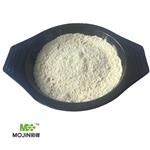
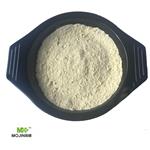
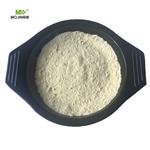
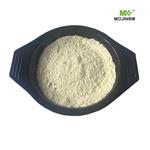
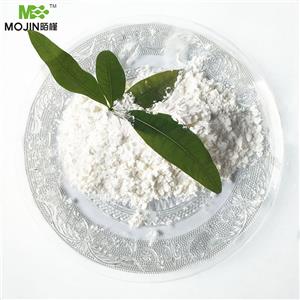
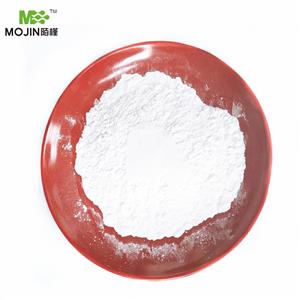


 Japan
Japan